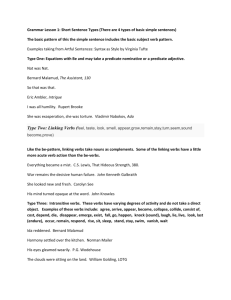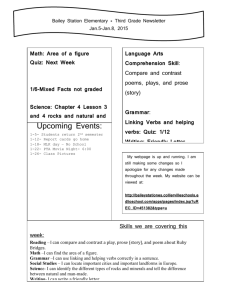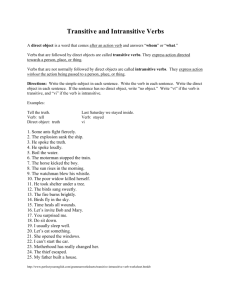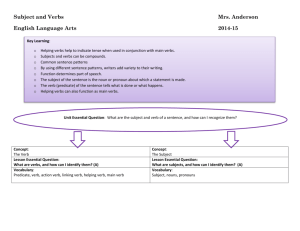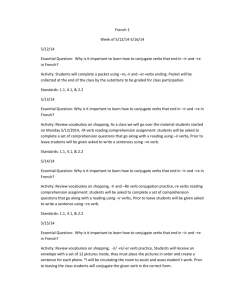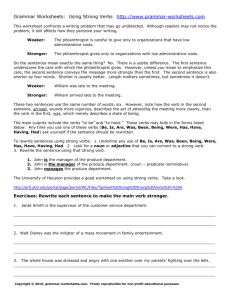みられる - Shoreline
advertisement
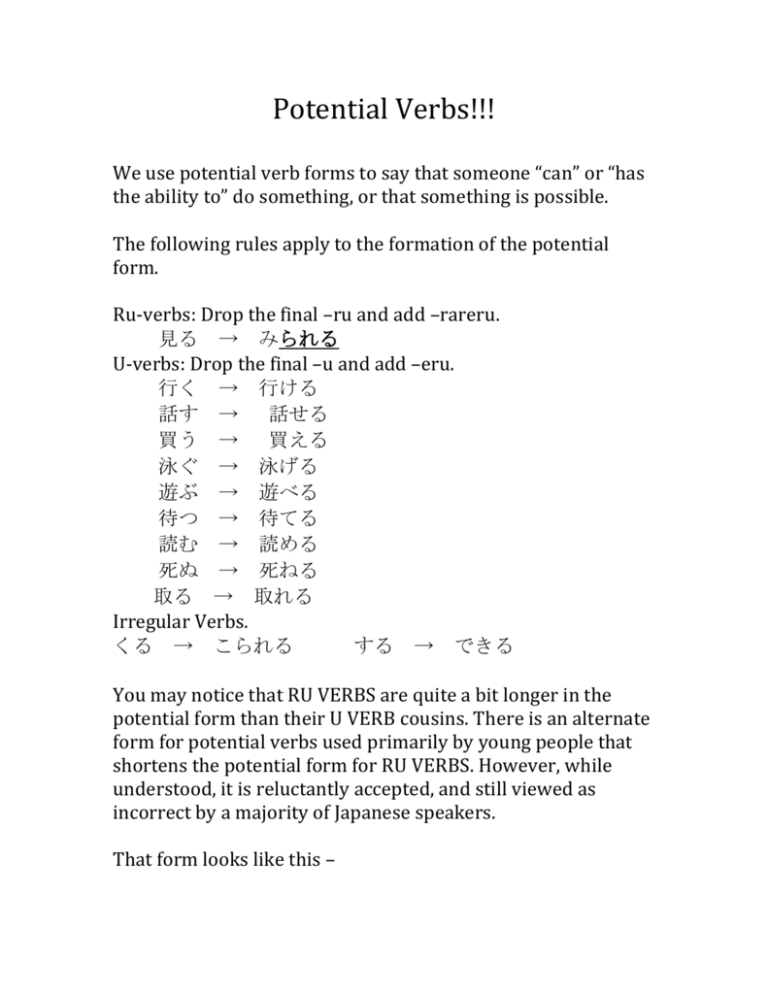
Potential Verbs!!! We use potential verb forms to say that someone “can” or “has the ability to” do something, or that something is possible. The following rules apply to the formation of the potential form. Ru-verbs: Drop the final –ru and add –rareru. 見る → みられる U-verbs: Drop the final –u and add –eru. 行く → 行ける 話す → 話せる 買う → 買える 泳ぐ → 泳げる 遊ぶ → 遊べる 待つ → 待てる 読む → 読める 死ぬ → 死ねる 取る → 取れる Irregular Verbs. くる → こられる する → できる You may notice that RU VERBS are quite a bit longer in the potential form than their U VERB cousins. There is an alternate form for potential verbs used primarily by young people that shortens the potential form for RU VERBS. However, while understood, it is reluctantly accepted, and still viewed as incorrect by a majority of Japanese speakers. That form looks like this – 出る 見る → → 出られる 見られる → → 出れる 見れる 来る → こられる → これる Verbs in the potential form conjugate just like regular RU VERBS. The chart below gives some examples of what this looks like! Present: Past: Te-Form: Present: Past: Te-Form: Short Forms Affirmative Negative 見られる 見られない 見られた 見られなかった 見られて Long Forms Affirmative Negative 見られます 見られません 見られました 見られませんでした IMPORTANT Verbs that take the particle を can take either を or が when they have been made into the potential. できる, the potential counterpart of the verb する, is somewhat special, and takes が almost all of the time. All particles other than を remain the same when the verb is turned into the potential. Verbs with を: 漢字を読む → 漢字が読める ・ 漢字を読める 仕事をする → 仕事ができる 山に登る → 山に登れる (no change)




